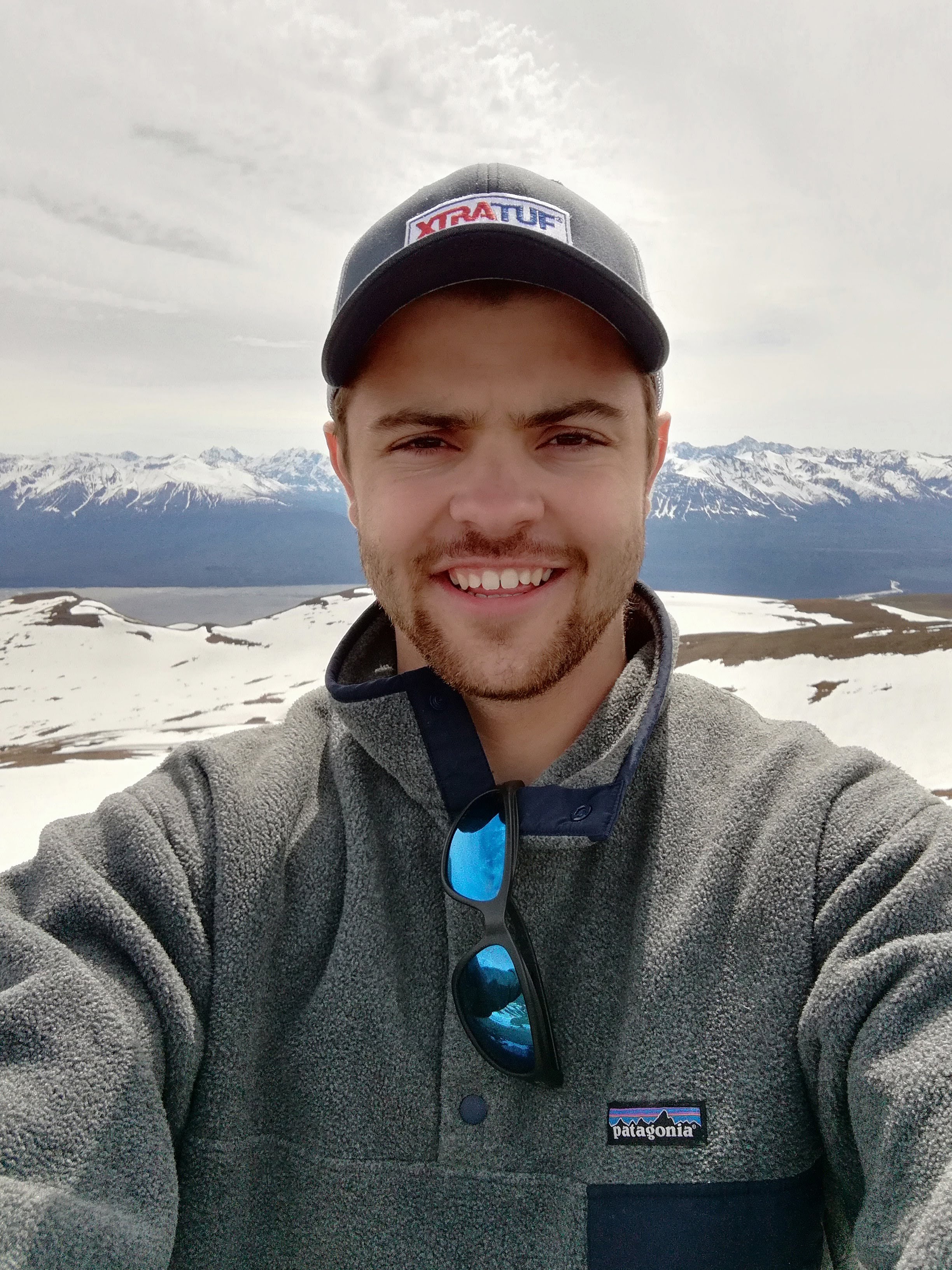Running a statewide seismic network requires expertise you might not immediately associate with earthquake research. Field engineer Evan McArthur started at the Alaska Earthquake Center while he was an electrical engineering student at UAF. His student project was designing a circuit to monitor electrical current remotely at a seismic station. Combined with other system monitoring, that offers the potential to determine from the office how much power a station has left and how long it will run, especially in the winter.
Evan started his full-time position as a field engineer shortly after graduating in May 2019. He travels to field sites doing repairs, maintenance, and upgrades during the short summer season. The rest of the year he works on designing equipment and helping monitor station “state of health” to watch for problems.
Field work in Alaska has its quirks. “One site has mountain goats and they kept ramming the solar panels. We found hair caught on some of the pieces. The wind blew rocks against the panels too. We had to install a plexiglass shield.” At other sites, bears like to tear apart the plastic seismometer vaults.
Evan’s specialty is the power systems for the seismic stations. Standard Earthquake Center stations use lead acid batteries with solar panels for charging and single-use backup batteries. The newly adopted USArray stations use lithium batteries. Evan’s job is to integrate these two systems and navigate the complexity of doing so in Alaska’s range of field conditions. Batteries are designed to work at specific temperatures—often room temperature. Charge capacity typically goes down in the winter, but Evan hopes that the lithium batteries may offer more sustained power.
“I really like working here because of the people and the culture, the attitude here,” Evan said. “People are responsible for their own tasks. The field team members like to teach about what they do, so I never feel bad asking questions.”








